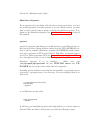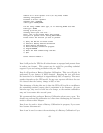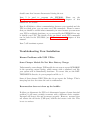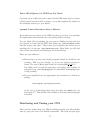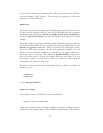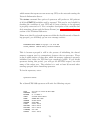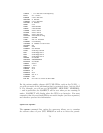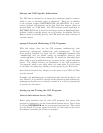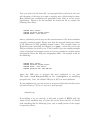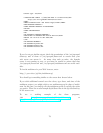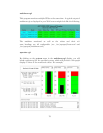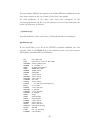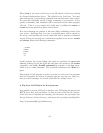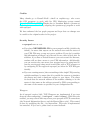hid-ups and USB Specific Information
The UPS has an internal set of timers and remaining capacity counters,
which it uses to determine when to shutdown. These are in addition
to the apcupsd counters BATTERYLEVEL and MINUTES. As a conse-
quence, apcupsd will shutdown on the first limit that triggers (either an
apcupsd limit, or a UPS limit). The UPS internal counter equivalent to
BATTERYLEVEL can be found in the hid-ups report as RemainingCapac-
ityLimit, which is typically factory set to 10 percent. In addition, the Low
Battery signal is normally given by the UPS when less than 2 minutes of
run time remain.
apcupsd Network Monitoring (CGI) Programs
With this release, there are five CGI programs (multimon.cgi, mul-
timoncss.cgi, upsstats.cgi, upsfstats.cgi, and upsimage.cgi). To have
them properly installed, you must run the ./configure command with
--enable-cgi and you should specify an installation directory with
--with-cgi-bin= or load them manually. To install the Cascading Style
Sheet, which is used by multimoncss.cgi, you must use the --with-css-dir=
option. The default directory for installation of the CGI programs is
/etc/apcupsd, which is not really where you want them if you are going
to use them. Normally, they should go in the cgi-bin of your Web server.
Once built and loaded, they will give you the status of your UPS or UPSes
over the network.
Normally only multimon.cgi or multimoncss.cgiis directly invoked by the
user. However, it is possible to directly invoke upsstats.cgi and upsfstats.cgi.
upsimage.cgi should never be directly invoked as it is used by upsstats.cgi
to produce the bar charts.
Setting up and Testing the CGI Programs
Network Information Server (NIS):
Before using multimon and the other CGI programs, first ensure that
apcupsd is configured to run the Network Information Server. This is done
by setting NETSERVER on in /etc/apcupsd/apcupsd.conf. This switch
is on by default. If you are unsure of its state, see the section at the end of
this chapter concerning the Client test program.
76



